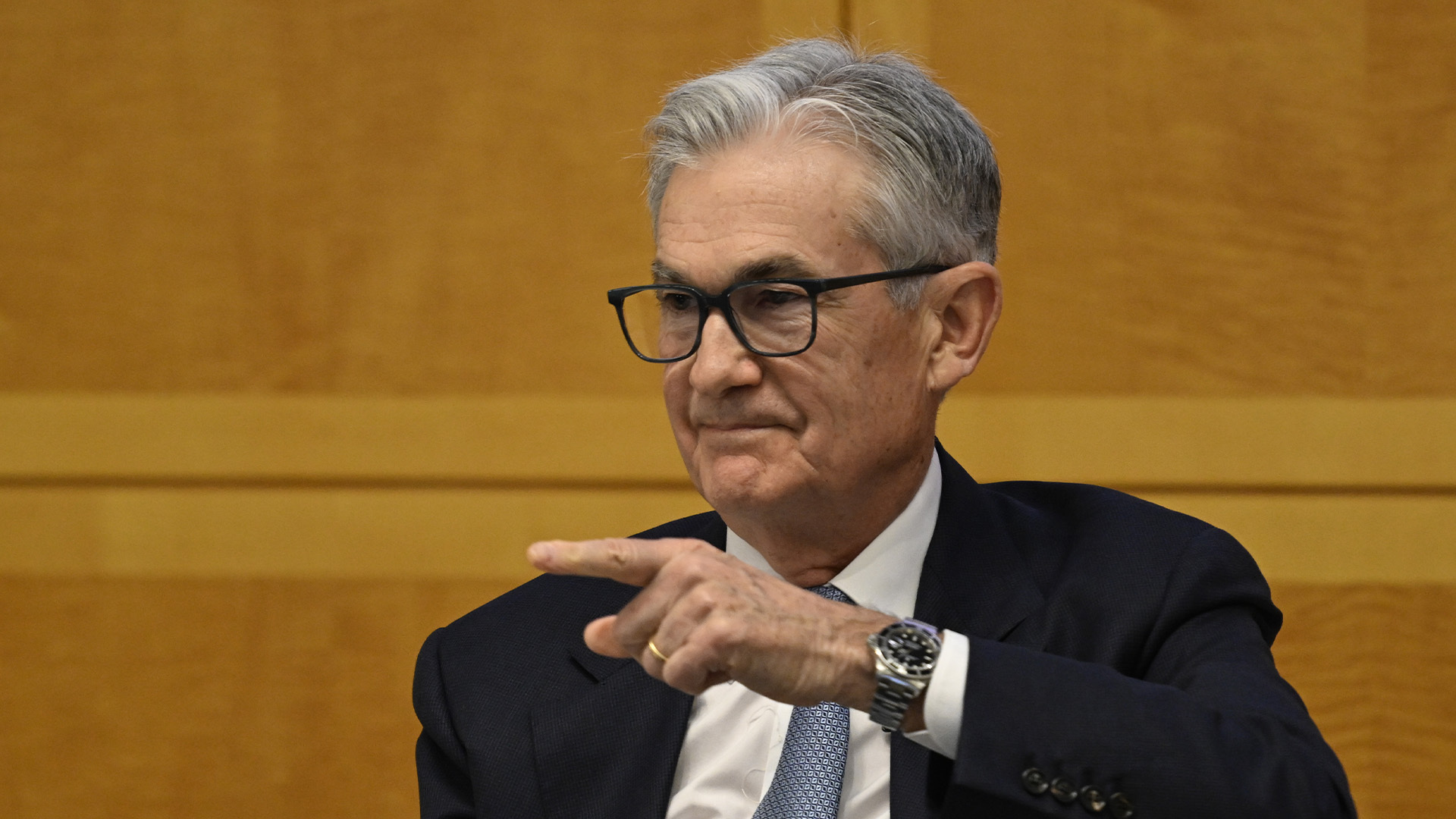
‘The time has come for policy to adjust’: Powell says rate cuts imminent
Published UpdatedBy Simone Del Rosario (Business Correspondent), Brent Jabbour (Senior Producer), Emma Stoltzfus (Editor)
For the first time in definitive terms, Federal Reserve Chair Jerome Powell said it is time to cut rates after witnessing “unmistakable” cooling in the labor market. Powell made the remarks Friday, Aug. 23, at the Kansas City Fed’s annual economic symposium in Jackson Hole, Wyoming.
Media Landscape
See how news outlets across the political spectrum are covering this story. Learn moreBias Distribution
Left
Untracked Bias
“The time has come for policy to adjust,” Powell said. “The direction of travel is clear and the timing and pace of rate cuts will depend on incoming data, the evolving outlook and the balance of risks.”

Download the SAN app today to stay up-to-date with Unbiased. Straight Facts™.
Point phone camera here
“We will do everything we can to support a strong labor market as we make further progress toward price stability with an appropriate dialing back of policy restraint,” Powell added. “There is good reason to think that the economy will get back to 2% inflation while maintaining a strong labor market.”
Despite the optimism, the labor market is undoubtedly slowing. In July, the unemployment rate spiked up to 4.3%, triggering a recession indicator. And the latest Labor Department revisions showed the Bureau of Labor Statistics overestimated job growth by 818,000 for jobs added throughout the year ending in March.
“The current level of our policy rate gives us ample room to respond to any risks we may face, including the risk of unwelcome further weakening in labor market conditions,” Powell said.
Given the remarks, markets are practically using permanent ink to mark a September rate cut. The Federal Open Market Committee, which sets the overnight lending rate, will meet three more times this year. Powell left the size and pace of rate cuts open to interpretation.
“My confidence has grown that inflation is on a sustainable path back to 2%,” Powell said.
[JEROME POWELL]
The time has come for policy to adjust.
[SIMONE DEL ROSARIO]
There you have it. For the first time in definitive terms, Federal Reserve Chair Jerome Powell says it’s time to cut rates.
In his keynote speech at Jackson Hole’s economic symposium, he noted the cooling in the labor market is “unmistakable.”
[JEROME POWELL]
The direction of travel is clear in the timing and pace of rate cuts will depend on incoming data, the evolving outlook and the balance of risks, we will do everything we can to support a strong labor market as we make further progress toward price stability with an appropriate dialing back of policy restraint, there is good reason to think that the economy will get back to 2% inflation while maintaining a strong labor market the current level of our policy rate gives us ample room to respond to any risks we may face, including the risk of unwelcome further weakening in labor market conditions.
[SIMONE DEL ROSARIO]
Left open to interpretation are how big those cuts will be and at what pace. But given these remarks, we can almost certainly write down a September rate cut in permanent ink.
After hiking and holding rates higher than they’ve been in more than two decades…
[JEROME POWELL]
My confidence has grown that inflation is on a sustainable path back to 2%
[SIMONE DEL ROSARIO]
It’s the closest he’s gotten to a “mission accomplished” moment.
In his highly-anticipated speech, Powell weaved a story of how the economy got to this point post-pandemic. And he addressed how wrong he and the Fed were in the early days of inflation’s rise. The infamous statements that inflation was “transitory” turned out to be one of the Fed’s biggest missteps.
[JEROME POWELL]
Standard thinking has long been that as long as inflation expectations remain well anchored, it can be appropriate for central banks to look through a temporary rise in inflation. The good ship transitory was a crowded one with most mainstream analysts and advanced economy central bankers on board. I think I see some former former shipmates out there today. (hold for laughs)
The data turned hard against the transitory hypothesis. Inflation rose and broadened out from goods to services, and it became clear that high inflation was not transitory, and that it would require a strong response if inflation expectations were to remain well anchored.
[SIMONE DEL ROSARIO]
There are lessons to take away from how the economy reacted to the shock of the pandemic and its aftermath. And lessons to be learned from how the Fed reacted. What’s missing from Friday’s speech is any definitive direction on how policy may change in the future, though the Fed will do an exhaustive review of monetary policy later this year.
For Straight Arrow News, I’m Simone Del Rosario.
Media Landscape
See how news outlets across the political spectrum are covering this story. Learn moreBias Distribution
Left
Untracked Bias
Straight to your inbox.
By entering your email, you agree to the Terms & Conditions and acknowledge the Privacy Policy.
MOST POPULAR
-
 Getty Images
Getty Images
Judge allows CNN lawsuit potentially worth billions to continue
Read15 hrs ago -
 Reuters
Reuters
It’s a bird, it’s a plane, it’s the first video of Alef Aeronautics’ flying car
Watch 2:1316 hrs ago -
 Getty Images
Getty Images
Democrats in Congress receive lowest approval rating in Quinnipiac poll history
Watch 2:5917 hrs ago -
 Getty Images
Getty Images
AG Bondi reviewing Epstein documents for release, could hold client list
Watch 1:4818 hrs ago




